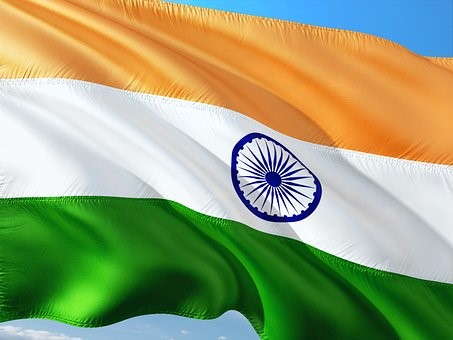India’s population, military strength, and strategic geographical location render it one of the world’s most important nations. The implications for the United States, particularly in the dangerous challenges from China, are extraordinary.
Key Indian government officials met in Washington in early February to meet with their Pentagon counterparts and discuss the growing Indo-U.S. military relationship.
The Pentagon notes that “Over the past decade, the U.S.-India defense relationship has become indispensable in promoting peace, prosperity and stability in the Asia Pacific and Indian Ocean region.”
The State Department notes that “The U.S.-India strategic partnership is founded on shared values including a commitment to democracy and upholding the rules-based international system. The United States and India have shared interests in promoting global security, stability, and economic prosperity through trade, investment, and connectivity.”
India has consistently taken a nonaligned position in global affairs. However, as China’s aggressiveness has increased dramatically, it has been forced to face the reality that its security lies with western-aligned nations.
The U.S. Institute for Peace reports “On December 9, hundreds of Indian and Chinese forces clashed along the Line of Actual Control (LAC), the roughly 2,100 miles contested boundary that separates northern India from China … both Indian and Chinese forces sustained injuries. The skirmish was the worst since the summer of 2020, when deadly fighting in the Galwan Valley led to the most significant border escalation in over four decades. In the wake of those 2020 clashes, India and China held 17 rounds of military talks — but have been unable to reach terms for disengagement across key areas of the disputed border.”
According to American Military News, Japan and India held their first joint air drills in an area outside of Tokyo as both countries step up military exercises with other countries amid worries about China’s assertiveness.
Globaldata’s Abhijit Apsingikar, a Defense Analyst at that organization, writes: “Growing presence along the Himalayan frontier, cross-border incursions and increased naval activity in the Indian Ocean by China are a cause of concern to India’s strategic interests, and hence India has enhanced it’s defense budget.”
Earlier this year, the White House notes, President Biden and Prime Minister Modi announced the U.S.-India initiative on Critical and Emerging Technology (iCET) in May 2022 to elevate and expand the strategic technology partnership and defense industrial cooperation between the governments, businesses, and academic institutions of the two countries. The two negotiations agreed to Develop a new bilateral Defense Industrial Cooperation Roadmap to accelerate technological cooperation between both countries for the joint development and production, with an initial focus on exploring projects related to jet engines, munition related technologies, and other systems. The U.S. has received an application from General Electric to jointly produce jet engines that could power jet aircraft operated and produced indigenously by India. The United States committed to an expeditious review of this application. They also agreed to enhance long-term research and development cooperation, with a focus on identifying maritime security and intelligence surveillance reconnaissance (ISR) operational use cases. Additionally, an “innovation bridge” will be launched to connect U.S. and Indian defense startups.
While India has recognized the common threat it faces from China with the U.S., it remains “nonaligned” in other international matters.
The Council on Foreign Relations notes that “New Delhi does not want to ruin its historical ties to Moscow, which is also a significant source of military equipment. (Over 70% of India’s military hardware comes from Russia, and last year, Russia delivered to India S-400 air defense systems.) But India also knows that it needs new international partners. And over the last two decades, it has found one in Washington.”
Illustration: Pixabay
